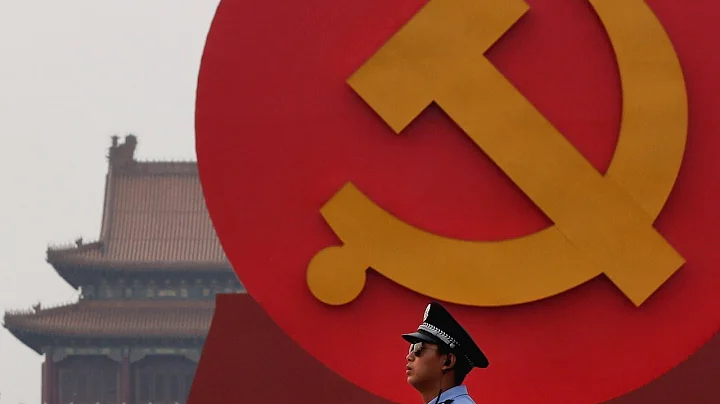During the Anti-Japanese War, Shaanxi was located in the rear area of the Anti-Japanese War and in front of the rear area. Shaanxi is the seat of the Central Committee of the Communist Party of China, the backbone of the anti-Japanese war, and Xi'an is the base where Zhang and Yang forced Chiang to promote the national war of resistance. For the Japanese army, the capture of Shaanxi would be a fatal blow to China's anti-war spirit. Why didn't the Japanese army occupy such an important strategic position after eight years of fighting?

In fact, both the Kuomintang and the Communist Party have a very clear understanding of Shaanxi's strategic position. If Shaanxi falls, the whole country will fall from northwest to southwest, and the consequences will be disastrous. However, in the early days of the Anti-Japanese War, there were only more than 10,000 troops left behind in northern Shaanxi, and they had to defend the western bank of the Yellow River, which was more than 300 kilometers away; there were more than 6,000 troops left behind in Guanzhong, and they had to defend the eastern part of Guanzhong, which was more than 100 kilometers away. The Japanese army successively put into attack five divisions and three brigades, with a force of 40,000 to 50,000 people, three times that of our army. They also had the cooperation of the air force and artillery. The disparity in strength between China and Japan made the Japanese army think that Shaanxi was bound to be won. .
But when the self-proclaimed Japanese army quickly advanced to the east bank of the Yellow River on the eastern border of Shaanxi, they were shocked when they saw the Yellow River. The Japanese from a small island country never thought that there was such a majestic river in the world. The Yellow River started from Fugu in Shaanxi. Heading south to Yumenkou of Hancheng , it bursts out of the canyon, as if falling from the sky, and then plummets thousands of miles, with a roar and vibration, and a powerful force. This momentum stunned the Japanese army. Looking at the Yellow River here, it was like a sea and a tide, surrounded by mire and swamps, and the depth of its flow was unpredictable. They were so frightened that the Japanese army immediately stopped advancing.

After a winter of planning, the Japanese invaders adopted a tactic of first using the air force to bombard our defenders indiscriminately, and then using armed ships to force the crossing and occupy the ferry. The follow-up troops, together with cars and armored troops, quickly landed and attacked. At this time, the main force of the Eighth Route Army had moved to the front line of northwestern Shanxi, and the main force of Yang Hucheng's troops in Guanzhong had also moved to the front line of Shanxi and Hebei. In terms of military deployment, Chiang Kai-shek dispatched heavy artillery regiments and other elite troops to be stationed in Tongguan to strictly guard the Yellow River defense line and Tongguan natural barrier to resist Japanese aggression. They built a Qianli River defense that starts from Fugu in northern Shaanxi in the north and ends at Tongguan and Fenglingdu in the south. The line of defense has become an important barrier to defend Shaanxi.
The anti-Japanese soldiers and civilians built strong fortifications in the mountains and equipped them with powerful firepower. When Japanese ships sailed into the river, they would knock people over and fire mortars at the enemy on the other side. At the same time, they would cross the Yellow River in a roundabout way and strike from behind. The Japanese army attacked from the front and back, causing chaos in the Japanese army camp, and they could only retreat towards Taiyuan. From 1938 to the end of 1939, the Japanese army launched more than 20 river-crossing battles from Fugu Ferry to Tongguan Ferry, all of which ended in failure.

The Japanese army had no choice but to make Shaanxi one of the important targets for indiscriminate bombing. During the eight years of their invasion of China, Japanese aircraft bombed Shaanxi more than 560 times, dropping more than 13,600 bombs, killing and injuring more than 10,000 people, and blowing up 43,000 houses. spare room. Its bombing time and scope are among the highest in the country. In these eight years, the Japanese army failed to invade Shaanxi, and they did not even cross the Yellow River. The biggest result of the Japanese army in Shaanxi was to capture a county town, Fugu, but they were driven out only a few hours later!

It can be seen that the Japanese army did not invade Shaanxi. It was not that they did not want to enter, but that they simply did not have the ability to enter. Shaanxi has natural chasms with the Yellow River from north to east. The terrain in Shaanxi is rugged and crisscrossed with ravines, which paralyzed the Japanese mechanized troops and forced them to fight hard. The Qin army has endured hard battles since ancient times and has a legacy of being able to fight and good at fighting, especially the "66" "Battle " 800 warriors jumped into the Yellow River, allowing the Japanese army to see the fierce combat effectiveness of Shaanxi "Lengwa". Therefore, it was our own natural dangers and the tenacious resistance of the military and civilians that made the Japanese army look at Shaanxi and sigh.

















![Lady With The Lamp 🕯️ [English Version] - DayDayNews](https://i.ytimg.com/vi/BEo6eQ7Vb3g/hq720.jpg?sqp=-oaymwEcCNAFEJQDSFXyq4qpAw4IARUAAIhCGAFwAcABBg==&rs=AOn4CLAoagzDlNB8NA0vk6CYxg9NZdkTAg)



